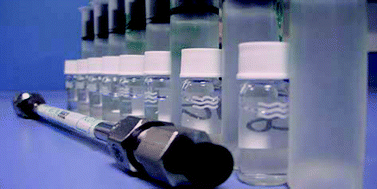Bromate analysis in groundwater and wastewater samples
Abstract
Bromate (BrO3−) is a disinfection by-product formed during ozonation of potable water supplies containing bromide (Br−). Bromate has been classed by the World Health Organisation as a ‘possible human carcinogen’, leading to implementation of 10–25 μg L−1 (as BrO3−) drinking water limits in legislative areas including the United States and European Union. Techniques have been developed for bromate analysis at and below regulatory limits, with Ion Chromatography (IC) coupled with conductivity detection (IC-CD), post-column reaction and ultra-violet (UV) detection (IC-PCR), or inductively coupled plasma-mass spectrometry detection (IC-ICPMS) in widespread use. The recent discovery of bromate groundwater contamination in a UK aquifer has led to a requirement for analysis of bromate in a groundwater matrix, for environmental monitoring and development of remediation strategies. The possibility of bromate-contaminated water discharge into sewage treatment processes, whether accidental or as a pump-and-treat strategy, also required bromate analysis of wastewater sources. This paper summarises techniques currently available for trace bromate analysis in potable water systems and details studies to identify a methodology for routine analysis of groundwater and wastewater samples. Strategies compared were high performance liquid chromatography (HPLC) with direct UV or PCR/UV detection, IC-CD, IC-PCR, and a simple spectrophotometric technique. IC-CD was the most cost-effective solution for simultaneous analysis of bromate and bromide within groundwater samples, having a 5 μg L−1 detection limit of both anions with limited interference from closely-eluting species. Wastewater samples were successfully analysed for bromate only using HPLC with PCR/UV detection, with detection limits below 20 μg L−1 (as BrO3−) and low interference. HPLC with direct UV detection was unsuitable for bromate analysis within the concentration range 50–5000 μg L−1 which was required for this project, but column choice was shown to be a major factor in determining limits of detection. Spectrophotometry could not reproducibly determine bromate concentration, although the technique showed promise as a quick field method for high-level groundwater bromate analysis.


 Please wait while we load your content...
Please wait while we load your content...